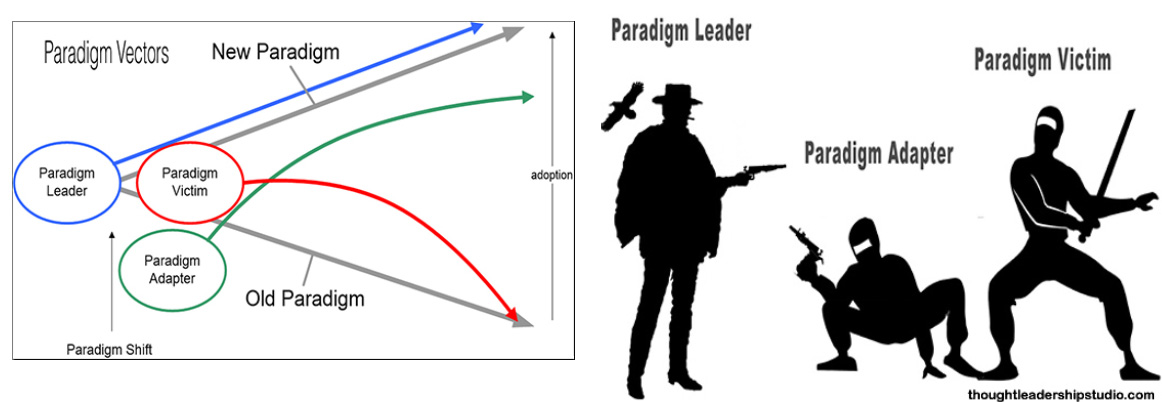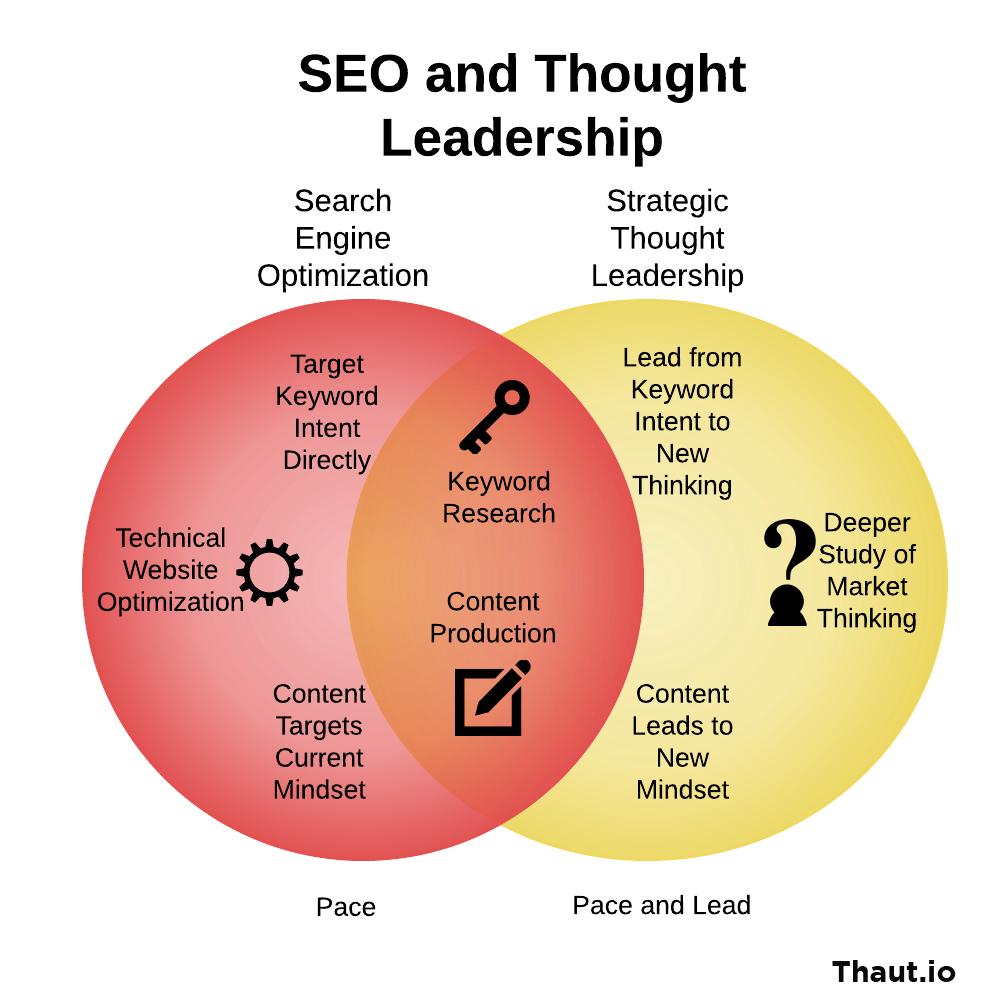Thought Leadership Studio Podcast Episodes:
How AI Can Support Thought Leadership with the Skyscraper Strategy
Episode 39- AI versus Search Engines like Google, methods for using ChatGPT for Thought Leadership, adapting the Skyscraper Strategy from SEO

#ai, #artificialintelligence, #chatgpt, #contentmarketing, #inspiration, #marketing, #marketingresearch, #marketingstrategy, #marketresearch, #paradigms, #paradigmshifts, #seo, #strategicthoughtleadership, #thoughtleadership, #thoughtleadershipmarketing, #thoughtleadershipmodel, #workshop
Or Click here to listen or subscribe on appWhat this episode will do for you
- Learn a method of using "generative AI" like ChatGPT for thought leadership.
- Discover (or get a helpful reminder of) the Skyscraper Strategy - typically used for SEO - and how it can be adapted and applied to creating a powerful method of Strategic Thought Leadership.
- Contrast the use of chat AI with search engines and the relative plusses and minuses of each.
- Learn the only two things that generate profits in a business and how Strategic Thought Leadership is where those two things intersect.
Curated Transcript of Podcast Episode 39- How AI Can Support Thought Leadership - the Skyscraper Strategy.
The transcript is lightly edited for clarity and is a partial transcript (with some bonus content)- the full episode is on audio. Click here to listen.
Use ChatGPT for Thought Leadership by applying the Skyscraper Strategy from SEO
Welcome to Thought Leadership Studio, your ongoing workshop in positive mass influence. Today, we'll be discussing the use of artificial intelligence for thought leadership - in particular, how to avoid potential pitfalls and leverage its strengths in service of building a message that captivates a growing and loyal audience.
The rise of ChatGPT and similar AI technologies is creating a significant impact on our work habits and communication strategies. As a listener of this podcast, I hope you are seeing, hearing, and feeling how much support there is for the thought leadership position that - in order to lead a market segment, profession, or field, you have to lead the thinking of an audience. And leading the thinking of an audience is best done through Strategic Thought Leadership. So, wherever you are on the continuum of skills in positive mass influence, as learners and practitioners of Strategic Thought Leadership, it's essential to identify the opportunities that this change presents and approach it with a mindset of driving change instead of being a victim of it.
That's a key principle underlying Strategic Thought Leadership- being an agent of positive change. While it is sometimes easy to feel our heads spinning as the rate of change accelerates yet more with AI suddenly being incorporated into day-to-day business life, isn't it more about embracing yet another opportunity to train our minds to see opportunity where others might see problems. Such opportunities might include leading our audiences to new perspectives on the use of AI as well incorporating such strategies for ourselves into how we do leadership, marketing, PR, and other forms of large scale, positive influence.
Isn't this point - being a catalyst of positive change - worth reflecting on together? A while back, I wrote a series of posts about paradigm vectors that pointed out how new paradigms and the responses to them follow 3 types of vectors.

The Three Paradigm Vectors:
- Paradigm Leader: Sets a new paradigm in motion.
- Paradigm Adapter: Perceives the new paradigm, adapts to it.
- Paradigm Victim: Stays stuck in the old paradigm.
Understanding the dynamics of paradigms is a quantum leap ahead of simply working on optimizing tactics in service of results. And it is a fundamental basis behind Strategic Thought Leadership.
I want to help you maximize the benefits of AI for yourself and your audience, whether you are a business owner, influencer, or anyone looking to lead others towards a particular philosophy or approach.
Maybe it is "Autocomplete on Steroids", But That Can Be Helpful
Let's consider ChatGPT, called "autocomplete on steroids" by Noam Chomsky. Sure, it can be useful for getting quick answers to our queries. But if we're using it to generate content, let's recall that content needs to leads to new thinking to add value. So it we are using it to answer questions on the minds of our audience, consider that our readers, watchers, and listeners can get that same or a similar answer from AI itself.
There's little point in creating content that gives our audience the same answer they can get from AI themselves.
So we must not rely solely on AI to replace our own thinking. Instead, we can use AI to extract what I call a baseline audience position more quickly and effectively.
To use AI for strategic thought leadership, we need to focus on understanding what's important to our audience, in other words, their higher values. By doing so, we can earn their attention and engagement by centering on what truly matters to them to help them get more of that.
Where Search Engine Optimization Fits In
This is where pulling from the field of SEO, or Search Engine Optimization, can be helpful.
SEO has a relationship with Thought Leadership Marketing.
 Many businesses rely heavily on leads generated by internet traffic from search engines. Someone new to the concept of search engine marketing might initially think that this is all about getting in front of customers who are ready to buy when they search for the product or service they are looking for. That's part of it, but it is even more important to rank high for the kind of searches people do when they are researching ahead of a purchase to educate themselves. Over 80% of customers making a major purchase do pre-purchase research online to refine their buying criteria and make a smarter decision.
Many businesses rely heavily on leads generated by internet traffic from search engines. Someone new to the concept of search engine marketing might initially think that this is all about getting in front of customers who are ready to buy when they search for the product or service they are looking for. That's part of it, but it is even more important to rank high for the kind of searches people do when they are researching ahead of a purchase to educate themselves. Over 80% of customers making a major purchase do pre-purchase research online to refine their buying criteria and make a smarter decision.
Smart businesspeople, entrepreneurs, and leaders will feed this online research by using it to develop and deliver the "best answer" with thought leadership content. The idea is that if your answer to a typical researching customer is the best answer online, it will tend to create the engagement, trust, social bookmarks, and links that help it rank higher in search engines, earning traffic, conversions and business by doing so.
AI's Challenge to Search Engine Marketing
Now we have a serious challenge to search engine optimization or SEO marketing. If a customer is doing pre-purchase research online, will they get a better answer more easily by asking Google or by asking ChatGPT? Microsoft's Google competitor, Bing, is now incorporating ChatGPT in its results... you just have to click on "chat". But that won't lead you to a website that has a "best answer".
If you rely heavily on search engines for your business, AI can be disruptive until and unless you learn to utilize it in a couple of ways. Firstly, ensure that your answer is better than what people get from AI like ChatGPT. This is where the skyscraper strategy comes into play. By offering the best answer on the web, you can dominate the skyline and differentiate yourself from others.
A "best of web" answer includes benchmarking against what you can find with both search engines and AI.
AI presents an opportunity to enhance your thought leadership by:
- Using it to extract baseline thinking quickly and effectively.
- Using it to benchmark the current best thinking on a topic within your field, professional, or market niche.
- Assist in discovering potential unmet, higher values in your audience that the current best thinking does not.
- Providing another channel for the discovery of your Thought Leadership Position, assuming you package and promote it so it is robust in this new world of AI. (more on that in future content!)
However, to succeed as a thought leader, you need to offer a unique perspective that resonates with your audience's higher values.
What is the Skyscraper Strategy?
The skyscraper strategy is an approach to search engine optimization (SEO) that involves creating high-quality content that is better than the existing content on a particular topic or keyword. The idea is to create content that is more comprehensive, better researched, and more useful than what is currently available, in order to attract more links, shares, and traffic to your website.
The process typically involves the following steps:- Identify a topic or keyword with high search volume and competition.
- Research the existing content on that topic and identify the gaps, weaknesses, and opportunities.
- Create a piece of content that is longer, more detailed, and more engaging than the existing content.
- Promote the content to relevant websites, blogs, and social media platforms, with the goal of getting links and shares.
- By creating high-quality content that stands out from the competition, you can attract more links, shares, and traffic to your website, which can improve your search engine rankings and ultimately drive more organic traffic to your site.
Since we are importing a strategy from SEO to use with AI for Strategic Thought Leadership, let's take a minute and contrast AI with Search Engines like Google and privacy-centric versions such as DuckDuckGo.
Artificial Intelligence vs. Search Engines
| Search Intent | AI | Search Engines |
|---|
| Informational | Winner | Loser |
| Navigational | Loser | Winner |
| Transactional | Loser | Winner |
| Pre-purchase research - General | Winner | Loser |
| Pre-purchase research - Specific | Loser | Winner |
| Local | Draw | Draw |
| Personal | Winner | Loser |
 To use AI to separate yourself from the competition with the "Skyscraper" strategy from SEO:
To use AI to separate yourself from the competition with the "Skyscraper" strategy from SEO:
- Benchmark your competitor's perspectives,
- create better perspectives that give more empowering answers to the questions prospects ask when they do pre-purchase research
- Brand it with your own proprietary model, and
- Promote it through the typical media and methods used with thought leadership.
Benchmarking should include a deep structural analysis- discovering the mental models behind the current thinking that you aim to better by using both search engines and AI. To do this work on the deeper structure of mental models- like ensuring a new building has an adequate foundation so it holds together in a hurricane, you can create a Thought Leadership Model with an architecture, such as the THAUT Process, to build a back story.
Contrast the Baseline with Creative New Thinking
If we're truly doing thought leadership, we are leading an audience to a new perspective. And that new perspective is by definition creative. And if we are using artificial intelligence that only has the past to work from, then we might want to remember my dictum: One measure of creativity is that which artificial intelligence that has access to your past output could not have predicted.
So one way to use ChatGPT would be to discover the baseline thinking that we're leading people from and to start to unravel the possibly hidden assumptions or unspoken rules that we might find a useful angle to challenge. These can be the hidden or unspoken rules of a profession, field of inquiry, a branch of science.
And at this point, one could ask, what's the role of changing beliefs if we're dealing with hard evidence? And I would counter that with how many situations where new evidence appears that is minimized or disregarded because of people's tendencies to stay embedded in old belief systems, even in the pace of new evidence. And there's multiple examples of this in science. What we're aiming to do is to get assumptions that we can challenge with a new perspective in the right format to begin to apply the THAUT process of Strategic Thought Leadership. To do that, we want to translate them into if-then statements and begin to explore counterpart thought leadership positions that would challenge them with alternate and better if-then statements.
So it would be useful experiment to ask ChatGPT to not only show the hidden assumptions and beliefs, unspoken rules in a field or a profession or product or service category or in a competitive segment of the marketplace, but to translate these unspoken rules into a then statements,

Are you tired of your company's online presence falling short of your expectations? Look no further than 5th Level Web - the web development and internet marketing company that makes the internet turn-key for companies with $5-$100M in annual sales.
5th Level Web is for market leaders. We make sure your web presence reinforces and supports your leadership.
At 5th Level Web, we have high-level tech experts on hand to ensure quick response times and top-notch service. Our team will work with you to create a compelling message and web presence that sets you apart from the competition, establishing your company as a market leader with the THAUT process of strategic thought leadership.
Click Here to schedule your free offer as a listener/reader of Thought Leadership Studio: a Free Web Analysis and Consultation.
Profits Come From Two Things: Innovation and Marketing
Strategic Thought Leadership is where innovation and marketing intersect. Now with chat AI giving us the ability to quickly get a baseline of "best current thinking" we can more quickly assess the springboard from which we help our audience's thinking extend yet further with thought leadership.
I believe it was Peter Drucker who originally said that profits in a business come from only two things: innovation and marketing. Strategic Thought Leadership is innovation in thinking applied to marketing. It is where they intersect and it can be the foundation of growth, strong profits, and market leadership.
***************************************
The transcript is lightly edited for clarity and is a partial transcript (with some bonus content)- the full episode is on audio. Click here to listen.
***************************************
Free Stuff and Offers Mentioned in Podcast
***************************************
***************************************
Click below to comment on LinkedIn

***************************************